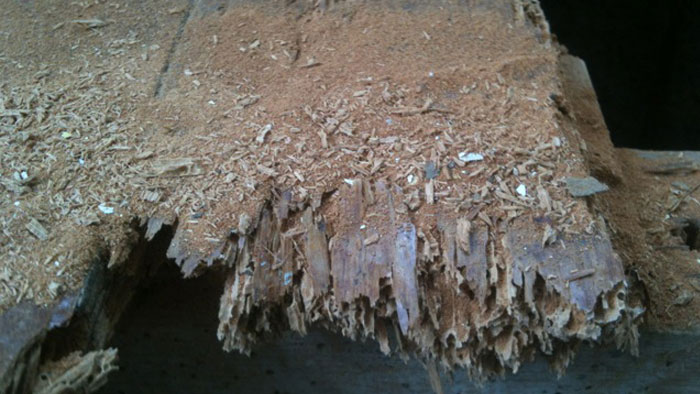Blog
How to Protect Your Home from Borer
Don't let your home get to the same state as this picture!

This is a photo of a borer infested section of wooden flooring, taken at a house we recently took over management of.
There are 7 species of wood-boring insect in New Zealand that can attack the timbers of your home. The most common of these is the house borer (also known as Woodworm in other parts of the world).
Adult females lay up to 100 eggs on bare timber or in old flight holes. The eggs hatch after 4-5 weeks and the larvae bore through the wood. The larvae can survive for up to 4 years and then pupate in a chamber near the surface. Finally, the adult exits the wood by eating its way to the surface creating a 'flight hole'. It mates and begins the life cycle over again. The flight holes are approximately 2mm in diameter for Common Borer and 3-4mm for Native Borer.
It is important that a thorough survey is carried out to ascertain the extent of any infestation. It is frequently the case that a few flight holes are visible on the exterior of painted weather boards, however when the boards are examined more closely the interior of the timbers are badly damaged and many flight holes are present on the interior surface.
The treatment of timbers to remove borer infestation is the same for whichever species is present. We recommend a professional pest control service such as Pure Services to treat your property. However, should you wish to complete this yourself, below is a full treatment schedule:
- Treat any bare wood with a NO Borer fluid. This insecticide will penetrate deep into the timber and will kill larvae as they eat the wood and prevent adults laying eggs on the surface. In normal circumstances this will protect the wood for many years.
- Inject flight holes with a NO Borer Injection fluid. This comes in a handy aerosol supplied with a nozzle for fitting into the holes. The aerosol forces insecticide into the labyrinth created by the borer larva killing any larva in the labyrinth or nearby. It also prevents adult beetles laying eggs in the flight hole.
- During each flight season (October-May) set off NO Borer Borafume Bombs in roof voids and sub-floor areas. These knock down adult beetles that would lay eggs on the exposed timbers here and give protection to the surface of the timbers.
- Borer prefer timber that has some moisture in it. Ensure that your sub-floor is dry and well ventilated. Check for plumbing leaks and unblock all air vents. Check for leaks in the roof and if you have old terracotta or concrete tiles check that they are well sealed. These can act like sponges soaking up water and increasing the relative humidity of roof voids. Products such as Kiwicare produce a silcone terracotta sealant called NO Leaks that can be used to seal tiles and walls.
Remember, prevention is better than cure and much easier on the pocket!
